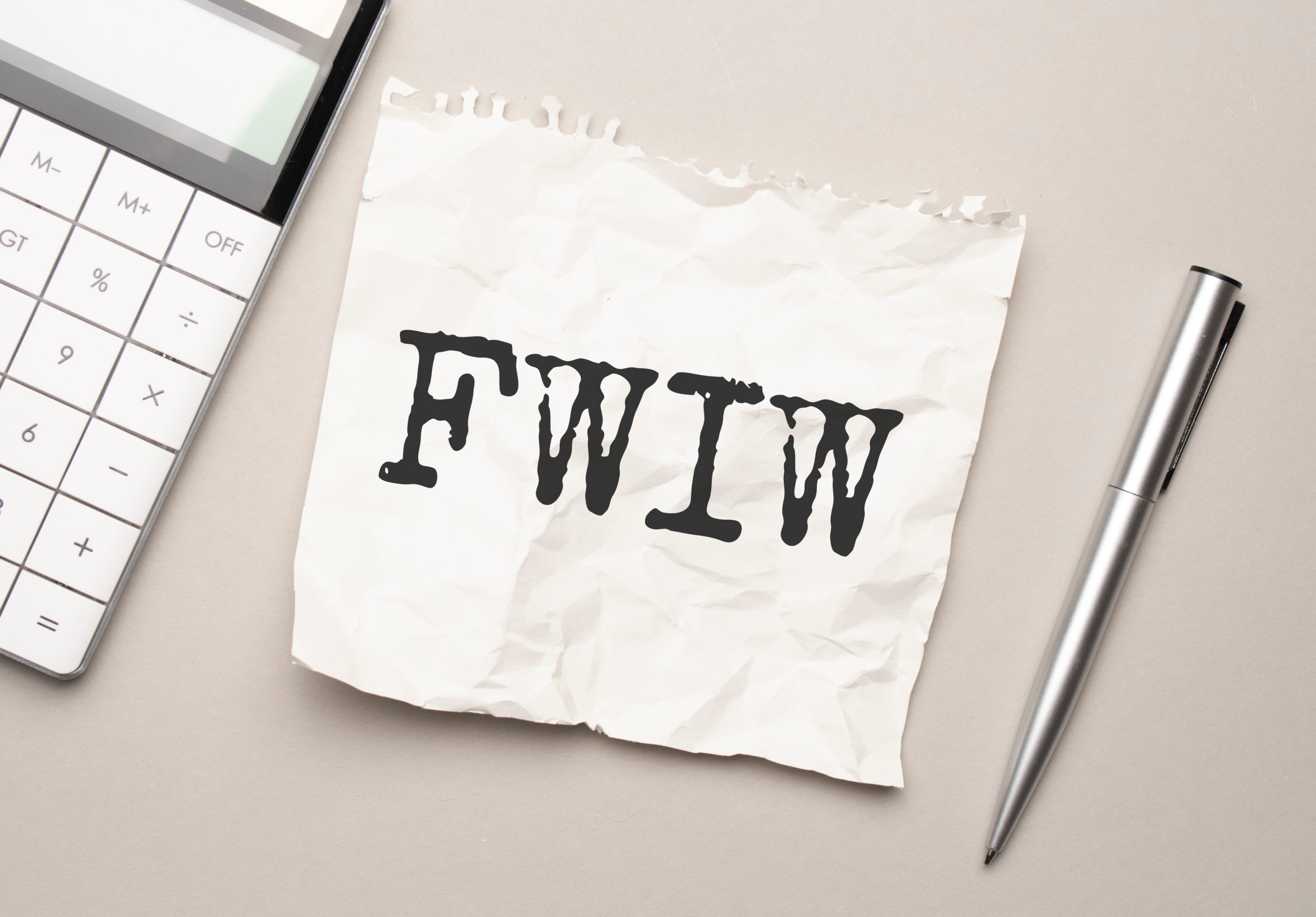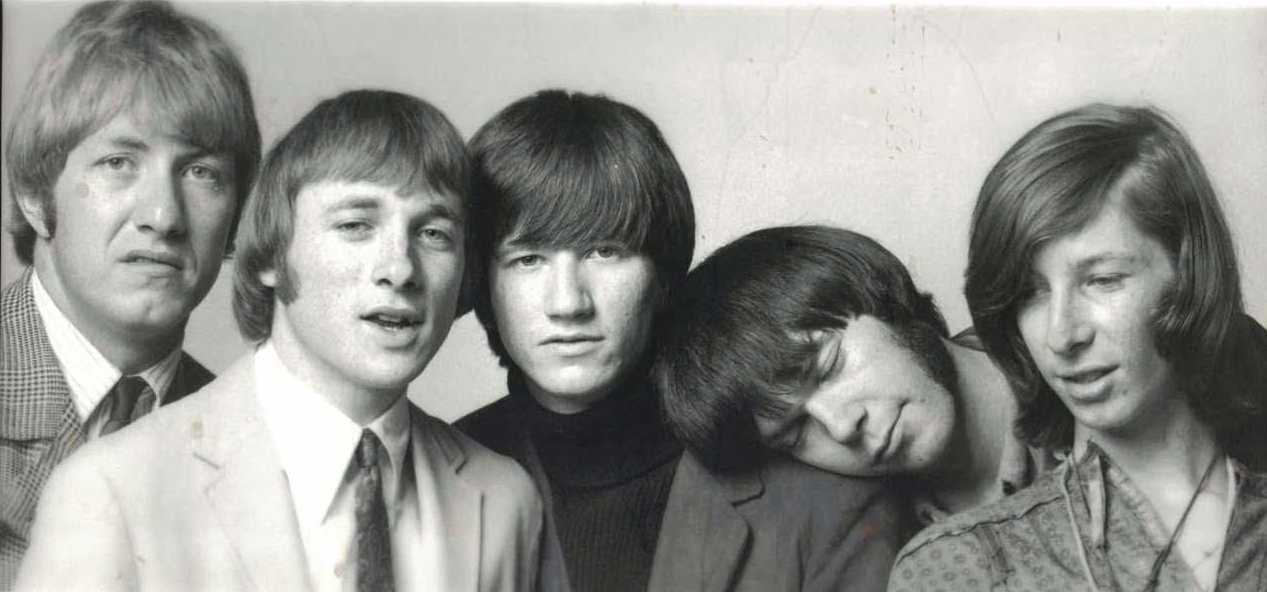
There are lots of topics that will stir up an audience and get them buzzing. For reference, check out one the most successful posts ever on JacoBLOG: the great Sheri Lynch (“The Bob & Sheri Show”) who wrote “The Top 5 Radio Topics That Get The Phones Ringing” back in early 2017. Since then, the post has racked up north of 150,000 views. For our blog, these are “Serial” numbers.

Of course, one of the reasons Sheri’s post resonated so well is that its topic reflected pop culture, the zeitgeist of what drives us to engage with each other – or in her and Bob Lacey’s case, a highly successful, long-running show. Among her favorite can’t-miss phone starters, Sheri mentioned “My ex and I still live together,” and a favorite of mine, “Money you’re hiding from your partner.”
Of course, relationship cheating, pet stories, and anything to do with money is fair game. Our most-COVID workspace drama provides contemporary context on the old issue of getting along with others – including the boss – at work.
Not that I’m itching to write a prep sheet (I’m not), there are simply some topics that are fun and productive, leading to great phones and social media interaction. And one my pet peeves is cover songs.
There are too many of them. And as we’ve seen the past couple decades on TV and in the film industry, “covers” have gone from interesting novelties to the only concepts worthy of funding. Reboots, spinoffs, prequels, sequels – you name it – they’re all one form or another of a “cover.”

Will the new network version of “Quantum Leap” perform better than the original? Who knows? And who cares? Most of those who watch this reboot on NBC-TV probably will be new to this show and it’s clever time and face shifting original.
The idea of “covers” ostensibly got its start in the world of music. Covers were always part of the scene. The most covered songs of all time? Good on-air trivia question. (Answer at the end of this post.)
White artists (in)famously covered many R&B songs, originally recorded by black singers and groups. In the process, they overshadowed the composers and performers who found themselves in the musical shadows.
And there have been times when innovative covers have performed better than the originals, including Manfred Mann doing a very different version of “Blinded By The Light,” originally a Bruce Springsteen song. There was Jimi Hendrix’s cover of Dylan’s “All Along the Watchtower” or Clapton recording his rendition of the Bob Marley reggae hit, “I Shot the Sheriff.”
When we enter a phase like we’re in now where covers are becoming more prevalent, it is very likely an indicator that musical innovation and invention are not exactly peaking. I don’t have the data to back this up, but I’d venture a guess there have been more covers produced in the last decade or so than in most musical periods of the past. It’s not a great sign about the future of pop and rock music when recording big hits of the past becomes a trend.
But when an artist decides to cover a past hit, I hope the new version shows signs of risk-taking, rather than simply cloning the original. The concept of recording someone else’s song is a safe decision, in and of itself. Being faithful to the original isn’t particularly innovative although it is easy.
The point is do something different from the original, remind us of how great it was, but bring out a different interpretation of a song. That’s not what Weezer did with Toto’s “Africa” back in 2018 although you can’t argue with the result. Here’s a band that seemed unlikely to cover a song that was decades old originally recorded by a group of studio musicians who never had much of a profile to begin with.
Here’s the video, featuring Weird Al Yankovic (which may be the most innovative thing about this cover):
The story goes that Weezer was inspired by “Stranger Things” (hello, Kate Bush) and hearing the Toto original, probably for the first time. Once again, art imitating art.
I liked Disturbed’s cover of “The Sound of Silence,” while I thought Post Malone did some incredible work on the entire Nirvana catalogue. And Joe Cocker’s version of “With A Little Help From My Friends” stands up well to the Beatles’ original from “Sgt. Pepper’s.”

When I saw Stevie Nicks get into the act last week, covering Buffalo Springfield‘s iconic “For What It’s Worth,” my defenses were already up. The original, written by Stephen Stills, is considered one of the greatest protest songs of all time.
In spite of the 60’s purge that’s been underway on Classic Hits and Classic Rock stations over the past few years, “For What It’s Worth” still tests very, very well. Fans of various ages hear something haunting, foreboding, relevant, and even predictive in the song, not dissimilar to the way Marvin Gaye’s “What’s Goin’ On?” still resonates.
The original is well more than half a century old, and still holds up. And that’s something Stevie Nicks was apparently thinking long and hard about when she made the decision to cover it:
Friday! #ForWhatItsWorth pic.twitter.com/SXuTGeW0QY
— Stevie Nicks (@StevieNicks) September 21, 2022
It is fascinating to gain some insights from the artist about her raison d’être for (re)recording “FWIW.”
Like most songs she records, the song sounds different from the way we hear the original, released way back in 1966. Back then, Vietnam War and civil rights protests were ongoing, and the U.S. had already witnessed the shocking assassination of its President, John F. Kennedy. There would be more to come. Unlike Neil Young’s “Ohio” or even Barry McGuire’s “Eve of Destruction,” Stills’ protest song was gauzier than in other protest songs. The references to the world around him are intentionally vague, perhaps one of the reasons why the song has held up so well. People hear what the want to hear:
“There something happening here but what is is ain’t exactly clear…”
In other words, see it for yourself. Make your own judgements especially as people become set in their ways and their dogmas:
“There’s battle lines being drawn, nobody’s right if everybody’s wrong…”
So, “what’s going down?”
Stevie’s quest to reimagine Stephen Stills’ lyrics and soul through “the eyes of a woman” is part of what makes this project compelling. It is also a reminder that musicians have been noticeably absent from the conversation these past few years – out of fear of losing fans or perhaps having little to say. In this bipolar, heated political environment, it is easier to write songs about partying and romance.
musicians have been noticeably absent from the conversation these past few years – out of fear of losing fans or perhaps having little to say. In this bipolar, heated political environment, it is easier to write songs about partying and romance.
Here’s the interesting part of Stevie’s play with this timeless classic.
There’s no video accompanying her haunting cover of “FWIW.” Now, I certainly don’t know the plan. The song could simply be another piece of the concert playlist for her new tour. Or maybe the idea is to make it bigger than that. For all I know, the video drops this week.
But until then, we’re left to think about Stevie’s interpretation of this classic with just audio, perhaps as it should be:
“Stop, hey what’s that sound?”
As we know, criticisms of the MTV Era reminded us that once we saw a song’s video, those visuals became the main way we “saw the song.” That’s certainly the case for tunes like “Sledgehammer,” “Beat It,” and “Old Time Rock n’ Roll.” Once you see the dynamic videos produced for songs like these, it’s hard to “unsee” them every time you hear the song.
for tunes like “Sledgehammer,” “Beat It,” and “Old Time Rock n’ Roll.” Once you see the dynamic videos produced for songs like these, it’s hard to “unsee” them every time you hear the song.
The lack of a artwork, graphics, photos, or old footage to support Stevie’s cover of “FWIW” means the interpretation is up to us, each of us seeing the song through our own lens rather than through a music video.
If she ends up releasing a video, those images may make her intentions clearer, but they may also stir up yet another exhausting debate fueled by vitriol coming from zealots from both sides of the spectrum.
”Singing songs and they’re carrying signs, mostly sayin’ ‘hooray for our side.'”
Frankly, I’m happy there’s no video. And my hope is that Stevie keeps the graphics nebulous when she performs “FWIW” in concert. But that’s me.
Here’s Stevie Nicks’ cover of “For What It’s Worth,” a song that simply doesn’t age. The “video” is labeled as the “official audio.”
What should radio programmers do with it?
If you’re a Classic Rock station with any degree of soul, you play it. In rotation.
And don’t laugh – I know there isn’t a current rotation at most classic-formatted stations. So on my station, I play it once a daypart. I let my staff and listeners talk about it on the morning show and on social. I post it on the website and let visitors vote. How does it compare to the original? What was Stevie thinking? Why this song?
In other words, it’s a “classic current,” if you excuse the oxymoron. And every format needs currents, even if we’re talking about gold-based radio. This is a beloved core artist sending a message about how she sees the world. We should give her – and the audience – a chance to be heard.
I know too well the “perils of politics.” And I’m not trying to drag you into that morass.
But when something comes along like this, it’s a moment – albeit a brief one – that stations can find a way to lean into.

A number of Alternative stations walked away from the Kate Bush retro hit, thanks to its appearance in “Stranger Things,” allowing Top 40 or AC stations in some markets to own it. “It didn’t fit the format,” some programmers explained.
But it did fit the zeitgeist of the moment, hitching an easy ride on one of Netflix’s biggest hits. It is about being in the moment.
So you could give Stevie Nicks’ cover of “For What It’s Worth,” a few spins and see if anything happens.
Or you could play “Edge of Seventeen” for the 400,000th time.
Your call.
P.S. I was watching the Sunday Night NFL game last night, and caught the tail end of a promo for next week’s game, pitting the Tampa Bay Bucs and the Kansas City Chiefs. Better put, a battle between the old guard – Tom Brady – and his heir apparent, Patrick Mahomes.
The promo was brilliant – Beck doing his cover of Neil Young’s “Old Man.” Beck has long admired Young, and this tribute pays homage to the artist and one of his best songs ever.
So, ALT PDs, look like you’ve got some decisions to make, too. Enjoy.
- In Radio, You Just Never Know - April 17, 2025
- The Secret To Making A Great Podcast (And Great Radio) - April 16, 2025
- I Read The (Local) News Today, Oh Boy! - April 15, 2025




Maybe we need a new format called Classic Artists. A lot of core artists are still putting out very listenable music that radio is largely ignoring but fans, streaming, and satellite radio are playing to attract listening. Once upon a time air personalities could judiciously introduce that music to audiences and gauge the response. Just having the computer dump it onto a play list, regardless of the category, doesn’t give it a chance. How much “Classic Rock” would have become classic if those old “Progressive Rock” stations hadn’t introduced artists and music that Top 40 would have never touched in the first place?
There was a time early on in the format where stations tried this. Also, “Yesterday & Today” sets playing the new song from the artist back to back with one of their classics. It turned out to be a better idea on paper than on the air. But many listeners enjoyed hearing new music from old friends. Thanks, Brian.
Start with an acknowledgment that artists may perform any song they like, provided they respect composer/publisher rights. But should they? I think usually not, with the first exception being the one you pointed up as an example: Jimi Hendrix’s cover of Dylan’s “All Along the Watchtower.” Fred, this is a version so different that it stands on its own without diminishing the composer’s own, brilliant performance. But most covers I’ve heard in my seven decades of listening do not clear this bar, and I wish they hadn’t tried. (Play anything you like in a live show, sure, but the decision to issue a studio recording is a different creature.)
Exception #2 would be compositional standards. Gershwin’s “Summertime,” Strayhorn’s “Lush Life,” Mingus’s “Goodbye Pork Pie Hat” are obvious examples of jazz standards covered countless times, and rightly so. They’re songs that have taken on a life of their own, such that many listeners won’t even know who composed them. The rock/pop canon has a smaller number of such standards, often because the composers only became performers years after they wrote materials for others to record (eg, Willie Nelson, Jackson Browne, Carole King, Joni Mitchell). Nico sang “These Days” long before Browne himself stepped up to the mic; was her version a cover?
Exception #3 would be tributes to originals recorded so many years or decades earlier that they serve to reward a brilliant but obscure artist not (or rarely) previously recognized. Clapton’s cover of “Crossroads” (Johnson) passes muster; “I Shot the Sheriff” (Marley) doesn’t.
A radio PD’s situation is analogous to the artist’s: Yes, I could put this newly issued cover into rotation, but should I?
Your mileage may vary.
Indeed, John. Thanks for some useful criteria. There are so many covers these days that programmers need to ask these questions.
Damn!!!! What a GREAT rendition!!! I’d be playing this every 2 hours at least for a couple of days!!!
Moi aussi, John.
It needs an edit, IMHO.
Keep reading. Debatable, but that’s what I love about these comments. Thanks, Ken.
Fred, I believe it was you (and Andy Bloom) who perfected “Yesterday and today” sets of music for Classic Rock stations which I embodied when at K-Rock bck in the early 90’s. Was a good way to get some “currents” into the mix. When I had the great pleasure to program WNEW-FM a second time in the mid-late 90’s I immediately added “Yesterday and Today” tunes to enhance the sound of the station which was mostly classic rock except for Vin Scelsa’s Sunday night free form show and Pete Fornatale’s Sunday morning “Mixed Bag” program. Station was doing well until it was decided to turn it into a talk station (and was somewhat successful until Opie and Anthony’s St. Patrick’s Cathedral fiasco). Anyway, I hope Classic Rock picks up on Stevie’s version of “For What It’s Worth” and also picks up on new releases from other Classic artists (assuming quality stuff is released).
Mark, we were onto something – a way to honor the old stuff, showcase the present, and keep the radio station from rotting from the inside. I think when they started becoming logged into the day, it started creating a demand, and the supply wasn’t always there. But they were fun, and showcased artists we hadn’t heard from in some time: Clapton, Fogarty, and so many others. Thanks for reminding me, Mark, and yes, I miss those days, too.
The entire Sgt. Pepper’s Lonely Hearts Club Band soundtrack!
Worst, right??
As is the case often with Fred’s great columns, I often say to myself on finishing it, “Oh Fred, don’t get me started….” Then I devote an hour I should be using to do something else to respond but… well, here goes.
First off, if you DO play the Stevie Nicks cover, there are a couple of cool things to mention about the original that many people don’t know.
The first Springfield album originally didn’t have the song on it. And the album wasn’t selling like Atlantic had hoped. Atlantic head Ahmet Ertegun was in LA to hear songs for a possible follow up album which the band members had played for him. As original bandmember Richie Furay told me (link below), everyone was putting their equipment away when Stephen Stills said, “I have one more, for what it’s worth…” and played the title-less song. Ertegun LOVED it, said it had to go out as a single, and he was SO urgent about it that Atlantic re-cut the first album with the song featured prominently on it, while dropping other songs off it.
https://www.paulingles.com/Furay/For-What-Its-Worth-Furay.mp3
The other thing is that it wasn’t really about assassinations or the Vietnam war. It was about young people over-crowding the Sunset Strip in LA and the LAPD getting rough with them, arresting abundantly.
The genius of the song is that, as Fred points out, the lyrics ARE gauzy. If Stills had written specifics about the LA Strip scene, no one would be playing it today. It’s also brilliantly non-committal about which side he takes. And, as Dylan and all the great ones knew to do, he couched the whole thing around a question. The only imperative in the song is to STOP NOW. WHAT’S THAT SOUND? EVERYBODY LOOK WHAT’S GOING DOWN. All he’s asking for is a “What’s wrong with this picture?” moment. Everyone can side with whichever side they feel most passionate about.
The most bold verse is the last. But it again speaks to the sense of paranoia that a threat of violence has on either side of conflict.
Paranoia strikes deep
Into your life it will creep
It starts when you’re always afraid
Step out of line, the men come and take you away
Now it stands to reason that Stills was more empathetic to the Sunset Strip youth than the police, but the sense of fear of what might happen when conflict erupts into violence is just as real on both ends of a protest scene, when you get right down to it.
Someone mentioned that Stevie’s version needs an edit. Definitely. At almost twice the length of the original, and half as effective, it serves to point out more of the genius of the original. It’s in, it’s out, it haunts, it’s gone for you to wrestle with. It’s “drop the mic” perfect at 2:41. (And of course every AM hit in 1967 had to be under 3:00 anyway but it’s still a good lesson. Any song these days that goes over 4 in my book better have something special going on to keep me from shouting “NEXT”!)
There are tons of other better covers of this one that deserved more attention (although Classic Rock stations would never play them). For a more compelling female read of it, look up Lucinda Williams version. Keb Mo had a solid one about 15 years ago. Billy Porter had a great one only a year or two back that had Stills playing guitar on it. I appreciate Stevie Nicks a lot, but it’s only her established star power in the Classic Rock format that makes this even a possibility.
Honestly, the BEST cover to play of it is the CSN version released live in L.A. on the ALLIES album. None of their other live versions measures up to the one recorded in 1982. If you want to hear one that, as Fred suggests, adds significantly to the original, this is it for me.
https://www.youtube.com/watch?v=naZHsxmMDDY
And as Fred knows, I loved “Yesterday / Today” sets. I considered it an essential to keep the format fresh and yes, your CR listeners DO care if/when their stars of yesterday are doing seriously good music of today. Sure, not as much as they love the old stuff. The new won’t probably ever test well. But I feel it’s worth doing. And it’s important to be discriminating because the newer material isn’t always that grand but when it is, I think a healthy slice of the CR audience would give it a fair chance.
BTW, if any PD’s reading this want to use the Furay anecdote above on a morning show rap about the new version, feel free. Just attribute a little on it to ID the clip. “Buffalo Springfield founding member Richie Furay talked with radio guy and rock historian Paul Ingles about it…”
Thanks for the excellent review, Paul! Fascinating story about Ertegun and Stills. I hunted for many years and finally found a copy of the original first Buffalo Springfield LP (before Atco reissued it with FWIW) at a used-record store in San Francisco, happily in mono because the stereo mix sucked (typical of mid-60s rock records). The one song deleted to make room for FWIW was otherwise available only on bootlegs; and it’s nowhere as good as the song that replaced it. Ah, memories.
Paul, I’m honored you took the time to write this. If you haven’t gathered by his thoughtful comment, Paul is a brilliant musical historian (specializing in our favorite genre) as well as a documentarian. Thanks again, Paul. This is why I write the blog.
I agree that the Allies album live version is the best recorded revamp on the song.
Paul, I’m sorry you had to give up an hour you “should be using to do something else.” But on behalf of all of us, thank you. That was great.
And why not? Stevie & Beck doing something different while creating talk. Oh & maybe I missed it, was looking for the most covered song answer at the end. Here it is & thanks Google. “Yesterday” has been covered 1600 X’s. Including by this guy. It’s Daffy Duck, on Classic Rewind.
https://www.youtube.com/watch?v=1XjU6unPID0
Not surprising, Tim. Thanks for looking it up.
I was listening to my K-Tel “Super Groovy Super 70’s Hits” album with the edited version of “Nice to be with you” by Gallery when I had to comment. What got this listener interested in new music was to hear it on the radio. I wished all of the “classic” stations would open up their playlists a bit and play some of it.
Covers seemed to become a bigger thing during the pandemic, when artists wanted to release new music, but not albums that they couldn’t tour behind. As for covers in general, IMO, unless they’re different than the original enough to be a new take on the song, what’s the point? There are some great classic rock covers that aren’t all that well known that I’ve posted here before. Here’s one I discovered recently:
https://www.youtube.com/watch?v=QW7WS-O2hjA&t=46s
As for the Stevie Nicks cover, I disagree that it needs and edit, the part after 2:41 is what makes it for me. Fred, remember when we argued about the line, “it doesn’t have to be old to be a classic”?
Wow, Stevie Nicks’ voice has gotten really deep.
Sounds like she’s experienced a lot of life.
Can’t agree more. If I’m in a bar, then a cover that honors the original is fine. But on the radio, for my enjoyment, bring something else to it besides your ability to copy the lead guitar or the vocals.
And I like that cover better than the Ataris.
And yes, I remember our “discussions” about IDHTBOTBAC!
If anyone wants to go down the rabbit hole of covers, I recommend the SecondHandSongs website–which I only came across recently, even though it’s been around for many years. The site itself includes a quiz (albeit only for registered users) and, as of about a year ago, has a spinoff radio show. Here’s the main listing for For What It’s Worth…
https://secondhandsongs.com/work/5471
A rabbit hole, indeed. Thanks for this, Eric.
NIck Moss on his “Privileged” LP covered “Fro What Its Worth” a while ago – never got any airplay, but it’s an interesting arraignment, slower w/a little WhaWha going on.
I saw that Stevie had covered the song and thought “could it be any good?”.
One listen and the answer is there. Phenomenal arrangement-and a whole new way to hear it.
I’m in the “play the hits” room- and there I’ll stay, but once in awhile you’ve got to step outside and smell the roses. This is one. Does it have a format ? Not really, but these days does that matter? No one’s really gone out on a limb lately, programming a station with a feng shui theme, ignoring a set “format”, instead playing songs that just fit together but you’ve gotta believe that playlist creators (music listeners) are doing just that on a daily basis. It’s got everything a hit needs. This won’t (or shouldn’t) begin a fad of playing remake after remake after remake…but this is a great example of how to invigorate your listener.
I think so, too. The phrase “out of format” came from us – not the audience. When something big, entertaining, interesting come along, it’s a moment on the radio station. Handled well, listeners will remember it for years.
Covers are a tough thing. If they hew too close to the original I think “what is the point” but go too far off and the same question could be asked.
I always look at Patti Smith’s “Gloria” as a perfect cover as she used it as a launching point for something that was uniquely her but with enough touch stones to know what song she was covering. I don’t know if that makes any sense to anyone but me.
That Dylan guy does some good covers of his own songs as well.
I wouldn’t bet on Classic Rock listeners wanting to hear new product though based on my experiences at shows. “Our new song” is typically the cue for many to use the restroom.
…or grab a beer.
Mike, it’s interesting how some artists have made a really nice living off covers. You mention Patti Smith – I think “Because the Night” is one of her best songs ever, and it has more passion that Springsteen’s – and HE wrote it. The Byrds did pretty well channeling Dylan into their jangly Rickenbacker 12-string sound. And what about Linda Ronstandt and Van Halen, both of who did great interpretations of other bands’ hits.
Thanks for chiming in on this one.
A lot of people don’t realize “Because the Night” was a Springsteen cover the same way the Byrds and Hendrix popularized tunes many people didn’t know were Dylan’s. Did that help them become “hits” because they didn’t have to fight the original?
“Quinn the Eskimo” is a great example of that. While I prefer the Basement Tapes version, Manfred Mann recorded it before the vast majority knew Dylan wrote it.
Are “Quinn”, “My Back Pages”, “You Ain’t Going Nowhere” and “All Along the Watchtower” covers when most think the artists that popularized them are the definitive versions? Like my previous “Gloria” example, they took ownership of it without just mimicking it so it is their song now.
And BTW – The Velvet Undergrounds “Sweet Jane” is one of my favorite songs of all time but I hated the Cowboy Junkies slow dreary version of it. Then I read that Lou Reed said it was his favorite. Even though I know what I like, who am I to question Lou? It sounds different in each of our ears, I guess.
Even if people think they’re listening to the original, a cover is still a cover. Just ask the guy (or gal) who first wrote/performed it! And I agree with you about the Cowboy Junkies’ version.
Fred –
Where do you/did you stand with The Dixie Chicks’ cover of Stevie Nicks’ “Landslide?” How about Carole King’s several covers of her own hit “You’ve Got a Friend,” the song she initially gave to James Taylor to record (which became an international hit) because she was personally hesitant do so? While Bing Crosby introduced “White Christmas,” is the Drifter’s version recorded a dozen years later any less effective?
If you want to cite a totally new approach as being the qualifier which imbues a proper cover, take Charles Aznavour’s 1964 release “Hier Encore” as an example. In 1969, this international hit became a surprise hit in the US as “Yesterday When I Was Young” on stations like WABC in NY for Roy Clark. Performed in English, what made this even more of a surprise, Clark, was more widely known for being a Country Music star than an MOR balladeer.
Jim, thanks for that history lesson about covers.